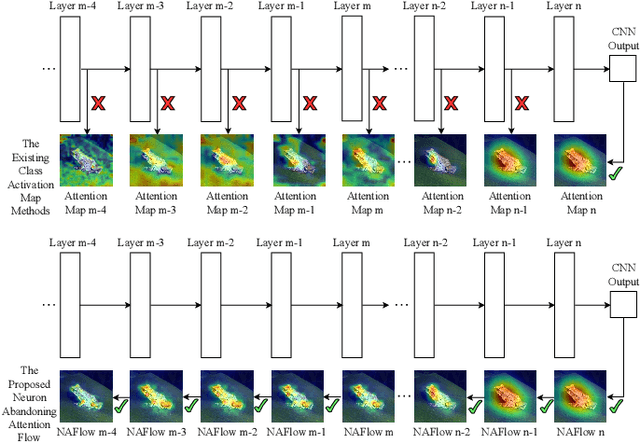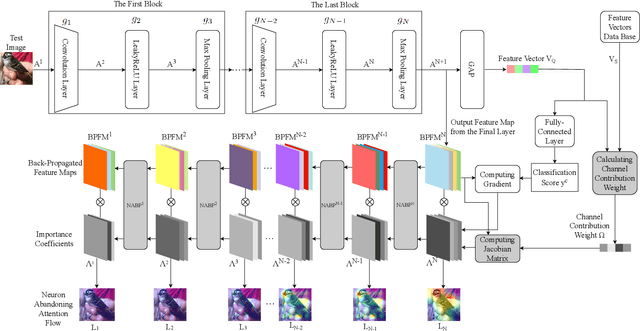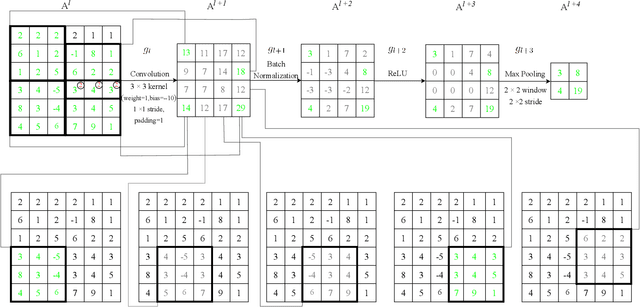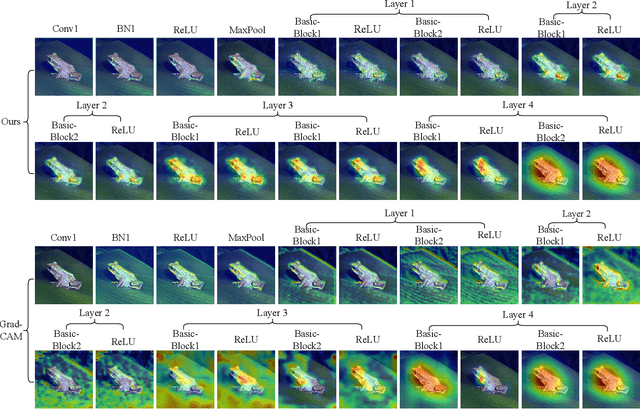Yongsheng Gao
Video Understanding by Design: How Datasets Shape Architectures and Insights
Sep 11, 2025Abstract:Video understanding has advanced rapidly, fueled by increasingly complex datasets and powerful architectures. Yet existing surveys largely classify models by task or family, overlooking the structural pressures through which datasets guide architectural evolution. This survey is the first to adopt a dataset-driven perspective, showing how motion complexity, temporal span, hierarchical composition, and multimodal richness impose inductive biases that models should encode. We reinterpret milestones, from two-stream and 3D CNNs to sequential, transformer, and multimodal foundation models, as concrete responses to these dataset-driven pressures. Building on this synthesis, we offer practical guidance for aligning model design with dataset invariances while balancing scalability and task demands. By unifying datasets, inductive biases, and architectures into a coherent framework, this survey provides both a comprehensive retrospective and a prescriptive roadmap for advancing general-purpose video understanding.
Progressive Bird's Eye View Perception for Safety-Critical Autonomous Driving: A Comprehensive Survey
Aug 11, 2025Abstract:Bird's-Eye-View (BEV) perception has become a foundational paradigm in autonomous driving, enabling unified spatial representations that support robust multi-sensor fusion and multi-agent collaboration. As autonomous vehicles transition from controlled environments to real-world deployment, ensuring the safety and reliability of BEV perception in complex scenarios - such as occlusions, adverse weather, and dynamic traffic - remains a critical challenge. This survey provides the first comprehensive review of BEV perception from a safety-critical perspective, systematically analyzing state-of-the-art frameworks and implementation strategies across three progressive stages: single-modality vehicle-side, multimodal vehicle-side, and multi-agent collaborative perception. Furthermore, we examine public datasets encompassing vehicle-side, roadside, and collaborative settings, evaluating their relevance to safety and robustness. We also identify key open-world challenges - including open-set recognition, large-scale unlabeled data, sensor degradation, and inter-agent communication latency - and outline future research directions, such as integration with end-to-end autonomous driving systems, embodied intelligence, and large language models.
LGD: Leveraging Generative Descriptions for Zero-Shot Referring Image Segmentation
Apr 20, 2025Abstract:Zero-shot referring image segmentation aims to locate and segment the target region based on a referring expression, with the primary challenge of aligning and matching semantics across visual and textual modalities without training. Previous works address this challenge by utilizing Vision-Language Models and mask proposal networks for region-text matching. However, this paradigm may lead to incorrect target localization due to the inherent ambiguity and diversity of free-form referring expressions. To alleviate this issue, we present LGD (Leveraging Generative Descriptions), a framework that utilizes the advanced language generation capabilities of Multi-Modal Large Language Models to enhance region-text matching performance in Vision-Language Models. Specifically, we first design two kinds of prompts, the attribute prompt and the surrounding prompt, to guide the Multi-Modal Large Language Models in generating descriptions related to the crucial attributes of the referent object and the details of surrounding objects, referred to as attribute description and surrounding description, respectively. Secondly, three visual-text matching scores are introduced to evaluate the similarity between instance-level visual features and textual features, which determines the mask most associated with the referring expression. The proposed method achieves new state-of-the-art performance on three public datasets RefCOCO, RefCOCO+ and RefCOCOg, with maximum improvements of 9.97% in oIoU and 11.29% in mIoU compared to previous methods.
TraNCE: Transformative Non-linear Concept Explainer for CNNs
Mar 26, 2025Abstract:Convolutional neural networks (CNNs) have succeeded remarkably in various computer vision tasks. However, they are not intrinsically explainable. While the feature-level understanding of CNNs reveals where the models looked, concept-based explainability methods provide insights into what the models saw. However, their assumption of linear reconstructability of image activations fails to capture the intricate relationships within these activations. Their Fidelity-only approach to evaluating global explanations also presents a new concern. For the first time, we address these limitations with the novel Transformative Nonlinear Concept Explainer (TraNCE) for CNNs. Unlike linear reconstruction assumptions made by existing methods, TraNCE captures the intricate relationships within the activations. This study presents three original contributions to the CNN explainability literature: (i) An automatic concept discovery mechanism based on variational autoencoders (VAEs). This transformative concept discovery process enhances the identification of meaningful concepts from image activations. (ii) A visualization module that leverages the Bessel function to create a smooth transition between prototypical image pixels, revealing not only what the CNN saw but also what the CNN avoided, thereby mitigating the challenges of concept duplication as documented in previous works. (iii) A new metric, the Faith score, integrates both Coherence and Fidelity for a comprehensive evaluation of explainer faithfulness and consistency.
Dynamic Accumulated Attention Map for Interpreting Evolution of Decision-Making in Vision Transformer
Mar 18, 2025Abstract:Various Vision Transformer (ViT) models have been widely used for image recognition tasks. However, existing visual explanation methods can not display the attention flow hidden inside the inner structure of ViT models, which explains how the final attention regions are formed inside a ViT for its decision-making. In this paper, a novel visual explanation approach, Dynamic Accumulated Attention Map (DAAM), is proposed to provide a tool that can visualize, for the first time, the attention flow from the top to the bottom through ViT networks. To this end, a novel decomposition module is proposed to construct and store the spatial feature information by unlocking the [class] token generated by the self-attention module of each ViT block. The module can also obtain the channel importance coefficients by decomposing the classification score for supervised ViT models. Because of the lack of classification score in self-supervised ViT models, we propose dimension-wise importance weights to compute the channel importance coefficients. Such spatial features are linearly combined with the corresponding channel importance coefficients, forming the attention map for each block. The dynamic attention flow is revealed by block-wisely accumulating each attention map. The contribution of this work focuses on visualizing the evolution dynamic of the decision-making attention for any intermediate block inside a ViT model by proposing a novel decomposition module and dimension-wise importance weights. The quantitative and qualitative analysis consistently validate the effectiveness and superior capacity of the proposed DAAM for not only interpreting ViT models with the fully-connected layers as the classifier but also self-supervised ViT models. The code is available at https://github.com/ly9802/DynamicAccumulatedAttentionMap.
Neuron Abandoning Attention Flow: Visual Explanation of Dynamics inside CNN Models
Dec 02, 2024



Abstract:In this paper, we present a Neuron Abandoning Attention Flow (NAFlow) method to address the open problem of visually explaining the attention evolution dynamics inside CNNs when making their classification decisions. A novel cascading neuron abandoning back-propagation algorithm is designed to trace neurons in all layers of a CNN that involve in making its prediction to address the problem of significant interference from abandoned neurons. Firstly, a Neuron Abandoning Back-Propagation (NA-BP) module is proposed to generate Back-Propagated Feature Maps (BPFM) by using the inverse function of the intermediate layers of CNN models, on which the neurons not used for decision-making are abandoned. Meanwhile, the cascading NA-BP modules calculate the tensors of importance coefficients which are linearly combined with the tensors of BPFMs to form the NAFlow. Secondly, to be able to visualize attention flow for similarity metric-based CNN models, a new channel contribution weights module is proposed to calculate the importance coefficients via Jacobian Matrix. The effectiveness of the proposed NAFlow is validated on nine widely-used CNN models for various tasks of general image classification, contrastive learning classification, few-shot image classification, and image retrieval.
Referring Human Pose and Mask Estimation in the Wild
Oct 27, 2024Abstract:We introduce Referring Human Pose and Mask Estimation (R-HPM) in the wild, where either a text or positional prompt specifies the person of interest in an image. This new task holds significant potential for human-centric applications such as assistive robotics and sports analysis. In contrast to previous works, R-HPM (i) ensures high-quality, identity-aware results corresponding to the referred person, and (ii) simultaneously predicts human pose and mask for a comprehensive representation. To achieve this, we introduce a large-scale dataset named RefHuman, which substantially extends the MS COCO dataset with additional text and positional prompt annotations. RefHuman includes over 50,000 annotated instances in the wild, each equipped with keypoint, mask, and prompt annotations. To enable prompt-conditioned estimation, we propose the first end-to-end promptable approach named UniPHD for R-HPM. UniPHD extracts multimodal representations and employs a proposed pose-centric hierarchical decoder to process (text or positional) instance queries and keypoint queries, producing results specific to the referred person. Extensive experiments demonstrate that UniPHD produces quality results based on user-friendly prompts and achieves top-tier performance on RefHuman val and MS COCO val2017. Data and Code: https://github.com/bo-miao/RefHuman
SATA: Spatial Autocorrelation Token Analysis for Enhancing the Robustness of Vision Transformers
Sep 30, 2024



Abstract:Over the past few years, vision transformers (ViTs) have consistently demonstrated remarkable performance across various visual recognition tasks. However, attempts to enhance their robustness have yielded limited success, mainly focusing on different training strategies, input patch augmentation, or network structural enhancements. These approaches often involve extensive training and fine-tuning, which are time-consuming and resource-intensive. To tackle these obstacles, we introduce a novel approach named Spatial Autocorrelation Token Analysis (SATA). By harnessing spatial relationships between token features, SATA enhances both the representational capacity and robustness of ViT models. This is achieved through the analysis and grouping of tokens according to their spatial autocorrelation scores prior to their input into the Feed-Forward Network (FFN) block of the self-attention mechanism. Importantly, SATA seamlessly integrates into existing pre-trained ViT baselines without requiring retraining or additional fine-tuning, while concurrently improving efficiency by reducing the computational load of the FFN units. Experimental results show that the baseline ViTs enhanced with SATA not only achieve a new state-of-the-art top-1 accuracy on ImageNet-1K image classification (94.9%) but also establish new state-of-the-art performance across multiple robustness benchmarks, including ImageNet-A (top-1=63.6%), ImageNet-R (top-1=79.2%), and ImageNet-C (mCE=13.6%), all without requiring additional training or fine-tuning of baseline models.
EIANet: A Novel Domain Adaptation Approach to Maximize Class Distinction with Neural Collapse Principles
Jul 23, 2024Abstract:Source-free domain adaptation (SFDA) aims to transfer knowledge from a labelled source domain to an unlabelled target domain. A major challenge in SFDA is deriving accurate categorical information for the target domain, especially when sample embeddings from different classes appear similar. This issue is particularly pronounced in fine-grained visual categorization tasks, where inter-class differences are subtle. To overcome this challenge, we introduce a novel ETF-Informed Attention Network (EIANet) to separate class prototypes by utilizing attention and neural collapse principles. More specifically, EIANet employs a simplex Equiangular Tight Frame (ETF) classifier in conjunction with an attention mechanism, facilitating the model to focus on discriminative features and ensuring maximum class prototype separation. This innovative approach effectively enlarges the feature difference between different classes in the latent space by locating salient regions, thereby preventing the misclassification of similar but distinct category samples and providing more accurate categorical information to guide the fine-tuning process on the target domain. Experimental results across four SFDA datasets validate EIANet's state-of-the-art performance. Code is available at: https://github.com/zichengpan/EIANet.
SpectralKAN: Kolmogorov-Arnold Network for Hyperspectral Images Change Detection
Jul 01, 2024



Abstract:It has been verified that deep learning methods, including convolutional neural networks (CNNs), graph neural networks (GNNs), and transformers, can accurately extract features from hyperspectral images (HSIs). These algorithms perform exceptionally well on HSIs change detection (HSIs-CD). However, the downside of these impressive results is the enormous number of parameters, FLOPs, GPU memory, training and test times required. In this paper, we propose an spectral Kolmogorov-Arnold Network for HSIs-CD (SpectralKAN). SpectralKAN represent a multivariate continuous function with a composition of activation functions to extract HSIs feature and classification. These activation functions are b-spline functions with different parameters that can simulate various functions. In SpectralKAN, a KAN encoder is proposed to enhance computational efficiency for HSIs. And a spatial-spectral KAN encoder is introduced, where the spatial KAN encoder extracts spatial features and compresses the spatial dimensions from patch size to one. The spectral KAN encoder then extracts spectral features and classifies them into changed and unchanged categories. We use five HSIs-CD datasets to verify the effectiveness of SpectralKAN. Experimental verification has shown that SpectralKAN maintains high HSIs-CD accuracy while requiring fewer parameters, FLOPs, GPU memory, training and testing times, thereby increasing the efficiency of HSIs-CD. The code will be available at https://github.com/yanhengwang-heu/SpectralKAN.
 Add to Chrome
Add to Chrome Add to Firefox
Add to Firefox Add to Edge
Add to Edge